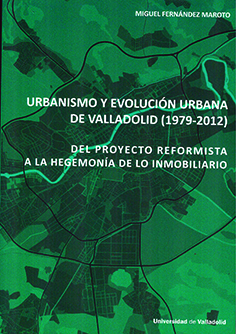URBAN PLANNING AND URBAN EVOLUTION IN VALLADOLID (1979-2012). FROM THE REFORMIST PROJECT TO THE HEGEMONY OF REAL ESTATE
Keywords:
town planning;, contempor, urban landscape;Synopsis
During the last urban expansion cycle in Spain, which extended from the late 1970s to the 2008 crisis, Valladolid experienced the most characteristic urban phenomena of this period. At the same time, its urban planning has reflected with singular exemplary accuracy the various changes in urban planning legislation, both national and regional, as well as the main disciplinary trends. After a summary of this recent evolution of the urban system and the urban planning framework in Spain, this book addresses in-depth analysis and interpretation of urban planning and urban evolution in Valladolid, both as a city and as a whole, between 1979 and 2012. Starting from the new city model proposed by the Socialist municipal government elected in 1979, which was embodied in the 1984 General Plan, the book then analyzes the loss of the reformist impulse in the 1990s, during which the reality of Valladolid as a metropolitan area in the making became evident. Finally, the imposition of real estate logic that marked the beginning of the 21st century is addressed, until the outbreak of the crisis and the beginning of a new cycle in Valladolid urban planning in 2012 with the revision of the General Plan.

Price
16.35 EURPublished
September 16, 2021
Right Holder
Ediciones Universidad de Valladolid y autor(es)/autora(s) 2021License

This work is licensed under a Creative Commons Attribution-NonCommercial-NoDerivatives 4.0 International License.
Details about the available publication format: Rustica
Rustica
ISBN
978-84-1320-149-8
Physical Dimensions
17cm x 24cm
Pages
336
Format
Paperback / softback (BC)

